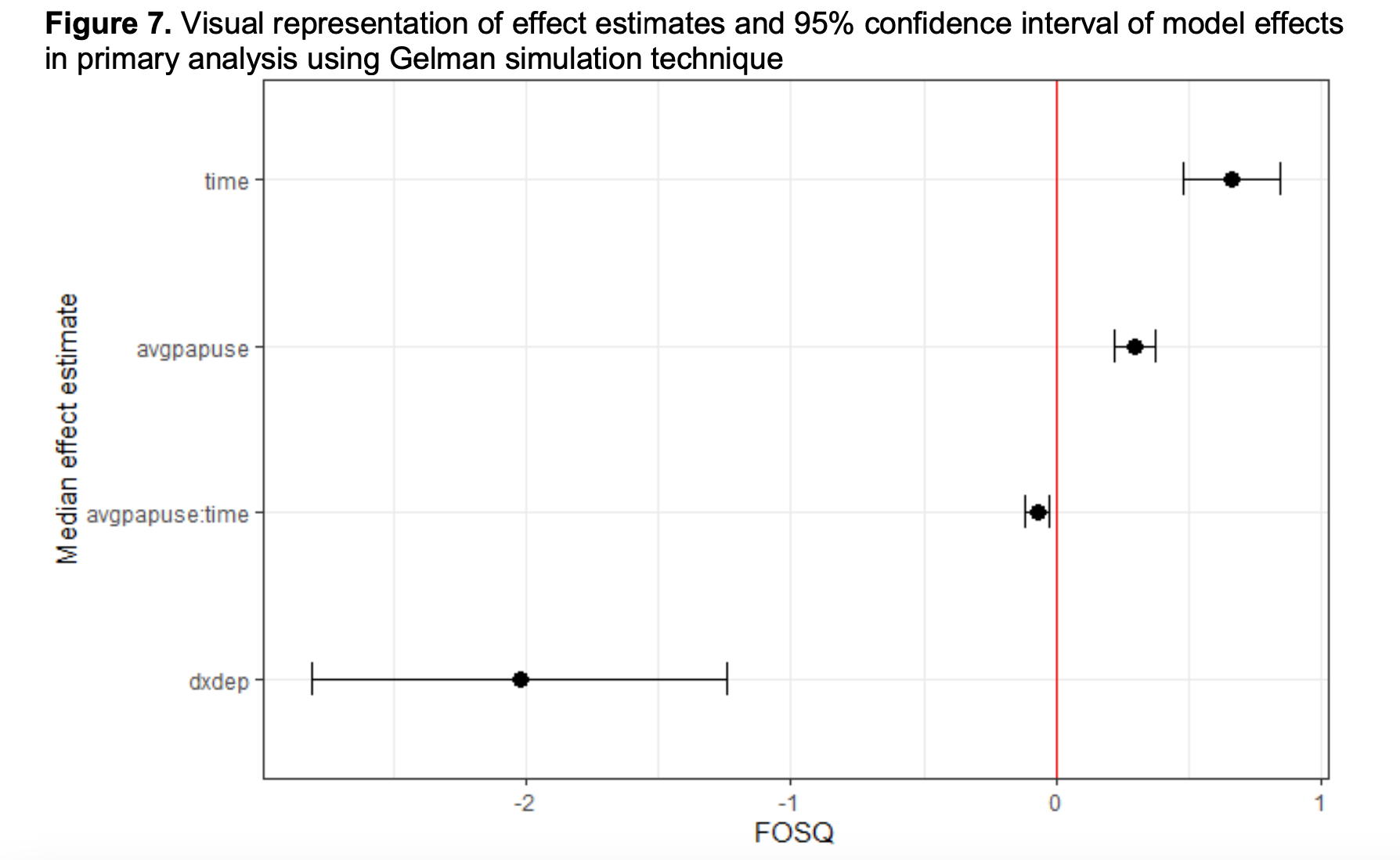
Association Between Adherence to CPAP and Quality of Life-A Longitudinal Analysis
We explored the effect of CPAP adherence on quality of life and other functional outcomes, as measured by the FOSQ global score, for the first 3 months of therapy.
The methods, which are summarized below included comparing a GEE to a linear mixed effects model, testing covariance structures, and choosing random effects structure
Based on our linear mixed effects model, we conclude that CPAP use is associated with improvement in FOSQ global score by 0.30 per hour increase in sleep (95% CI: 0.22, 0.38; t- value 7.5; p < 0.001). The interaction of time and CPAP use decreases FOSQ by -0.07 per hour sleep * month (95% CI: -0.11, -0.02; t-value = 3.0, p = 0.003). This may indicate a stronger effect of CPAP adherence early in therapy which wanes with time. Depression had the biggest effect in the model and decreased global FOSQ scores by -2.06 (95% CI: -2.90, -1.23; t-value - 4.8; p <0.001).
Model type: Provided that the distribution of the FOSQ global score was non-normally distributed, we constructed a longitudinal GEE model specifying a gamma distribution. The fit of the GEE model was compared to the linear-mixed effects model by examining the residual plots. Although the data appeared to follow a gamma distribution, the residual plots of the linear mixed effects model showed a better fit.
Covariance structure: Next, we compared a variance component and an unstructured covariance model using a likelihood ratio test. The null hypothesis that the reduced model was adequate relative to the unstructured model was rejected, and thus an unstructured covariance model was used
Random effects structure: we evaluated whether the random effects structure could be reduced using a LRT. It was found that the random intercept model was insufficient compared to random slope and intercept.